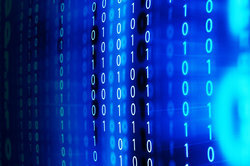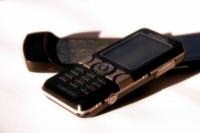How does the binary system work?
Even if the binary system is hardly considered in school education, it is extremely important for today's life. Because everything that is controlled with a computer only works with the binary system. Even if the counting method takes a bit of getting used to, you can get behind it quite quickly.

General information about the binary system
Nowadays one uses in the mathematics and in everyday life the decimal system, so one forms the Counting using the digits 0 to 9.
- This has the advantage that you just have to count it up, so first 0, 1, 2, until you get to 9. Then a 1 is added and you start over again 10, 11... 19. Then increase the twos and so on. - You know it all too well from that primary school.
- In the binary system you only have the digits 0 and 1. This may seem simpler at first glance, but it is very complicated or rather complicated, especially with large numbers. expensive, especially since this system is rarely used in practice.
- The binary system is most widely used in the computer industry because all computers are built or built on the binary system. just work over this. So: even if you do some calculations on the computer or play a game, your PC only works with zeros and ones.
- The counting up works a little differently here. First come the 0 and the 1. Next, the 1 slides to the left and a 0 is added (= 10). Then the 0 is incremented so that you are at 11. Since you cannot increase the 11 any further, the third digit appears, which starts again at the lowest value (100). Now count up again step by step, first 101, then 110 and then 111. Then again 1000, 1001, 1010 and attention 1011 and 1100.
You can use the familiar alphabet in a coded notation. For this …
This is how converting to binary works
Since it is impractical to convert a decimal number into the corresponding binary number with the above-described counting up, there is a relatively simple way of doing this, which actually does not calculator functions:
- You basically only need to calculate your decimal number down to the dual system (i.e. two numbers). That is, you divide the number by 2 until you get to the remainder 0, and then make a note of the remainder.
- For example the number 36: if you divide this by 2 you get 18 with no remainder (remainder = 0). 18 through 2 is exactly 9 (remainder 0). If 9 through 2 you get 4 and have a remainder of 1. 4 through 2 is 2 (remainder 0), 2 through 2 is 1 (remainder 0) and 1 through 2 is 0 with remainder 1.
- You now only need to read these individual residual values from back to front and you will receive your binary code: 100100.
From binary to decimal
Converting from binary to decimal works differently, but is not really complicated.
- With large numbers, you may just need a calculator because you come with Potencies have to work.
- In principle, you only need to multiply the binary code from right to left by the following power of 2 (i.e. 2 to the power of x) and add the individual values. The only peculiarity is that the first power starts at 0, so you are 20 to have.
- In the above example (100100), you must first have 0x20 calculate and this with 0 x 21 add. The entire equation would therefore be: 0x20 + 0x21 + 1 x 22 + 0x23 + 0x24 + 1 x 25. This means: 0 + 0 + 4 + 0 + 0 + 32 = 36.
How helpful do you find this article?


